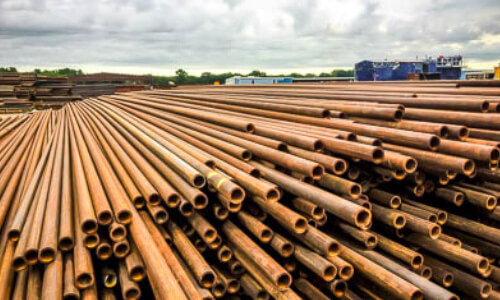Air Preheater (APH) tubes are essential components in thermal power plants and large-scale industrial boilers. These tubes play a critical role in recovering heat from flue gases and using it to preheat incoming air for combustion. This process significantly enhances boiler efficiency and reduces fuel consumption. Understanding the different types of APH tubes and their specific applications can help plant operators optimize performance, reduce emissions, and ensure long-term system reliability.
What Are APH Tubes?
APH tubes are part of the Air Preheater, a heat exchange system located between the boiler and the chimney in power plants. Their primary function is to capture residual heat from flue gases and transfer it to the air that will be used for combustion. This preheated air burns fuel more efficiently, increasing thermal output while lowering operational costs.
These tubes must endure high temperatures, corrosive gases, and thermal cycling, making material choice and design absolutely vital.
Types of APH Tubes
There are several types of APH tubes based on material composition, shape, and construction, each suited for specific conditions:
1. Carbon Steel APH Tubes
-
Description: Widely used due to their cost-effectiveness and ease of fabrication.
-
Temperature Resistance: Up to 400°C.
-
Application: Suitable for boilers operating in relatively mild conditions.
-
Pros: Affordable, good heat transfer.
-
Cons: Limited corrosion resistance; may degrade faster in acidic or wet flue gas environments.
2. Corten Steel APH Tubes (Weathering Steel)
-
Description: Developed to resist corrosion better than plain carbon steel.
-
Features: Forms a stable rust-like appearance after exposure, which acts as a protective barrier.
-
Application: Used in environments with high humidity or acidic flue gases.
-
Pros: Enhanced corrosion resistance, longer lifespan in moist environments.
-
Cons: Slightly higher cost than carbon steel.
3. Stainless Steel APH Tubes (304/316 Grades)
-
Description: Excellent resistance to corrosion, high temperature, and scaling.
-
Application: Ideal for boilers handling sulfur-rich fuel or in coastal, chemical, and food-grade industries.
-
Pros: Excellent durability and resistance to acids and moisture.
-
Cons: Higher initial cost; may not be necessary for low-corrosion environments.
4. Alloy Steel APH Tubes (T11, T22, T91)
-
Description: Designed for high-temperature and pressure conditions.
-
Application: Supercritical and ultra-supercritical power plants.
-
Pros: Excellent mechanical properties at elevated temperatures, improved oxidation resistance.
-
Cons: More expensive and complex to fabricate.
5. Finned Tubes
-
Description: These tubes come with extended surface areas (fins) to increase heat transfer efficiency.
-
Application: Used where space is limited but high heat recovery is required.
-
Pros: Enhanced thermal efficiency, compact design.
-
Cons: More prone to fouling, requiring regular cleaning.
Importance of APH Tubes in Boiler Efficiency
The right selection and maintenance of APH tubes can significantly influence boiler performance and longevity. Here’s how they make a difference:
1. Enhancing Combustion Efficiency
By preheating combustion air, APH tubes raise the air temperature entering the furnace. This results in better fuel-air mixing and more complete combustion, improving overall thermal efficiency.
2. Reducing Fuel Consumption
When the incoming air is already heated, the boiler requires less fuel to reach its desired output temperature. This translates to lower operating costs and improved energy conservation.
3. Lowering Emissions
Improved combustion leads to reduced carbon monoxide (CO) and unburnt hydrocarbons. Additionally, less fuel consumption reduces the generation of NOx and SOx gases, helping facilities meet environmental regulations.
4. Prolonging Equipment Life
Efficient heat transfer and reduced soot formation minimise thermal stress on the boiler tubes, extending the lifespan of the boiler system and reducing maintenance downtime.
5. Cost Savings Over Time
Though high-performance APH tubes (like stainless or alloy steel) come with a higher upfront cost, they last longer and reduce maintenance needs, resulting in lower total ownership costs over time.
Maintenance Tips for APH Tubes
To ensure optimal performance, periodic maintenance is essential:
-
Regular Cleaning: Soot and ash deposits can reduce efficiency.
-
Corrosion Monitoring: Look for signs of scaling or pitting, especially in corrosive gas environments.
-
Thickness Testing: Check for wall thinning using ultrasonic testing techniques.
-
Leak Detection: Perform pressure tests to identify any cracks or holes.
Conclusion
Selecting the right APH tubes is not just a matter of material cost—it’s a decision that impacts energy efficiency, environmental compliance, and equipment durability. Whether you’re running a thermal power plant, a refinery, or an industrial boiler setup, understanding the types and significance of APH tubes will help you optimise combustion efficiency and reduce long-term costs.
Always consult with experienced APH tube suppliers or manufacturers who can provide custom solutions tailored to your boiler specifications and working conditions.
- Types of APH Tubes and Their Role in Boosting Boiler Efficiency
- Explore the different types of APH tubes used in power plants and industrial boilers. Learn how the right APH tube selection enhances boiler efficiency and reduces fuel costs.
- APH Tubes
Related posts:
 Luxury or Budget? Finding the Right Heathrow Transfer for You
Luxury or Budget? Finding the Right Heathrow Transfer for You
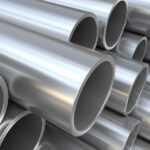 What Is Cold Rolled Stainless Steel Coil and Why Does It Matter?
What Is Cold Rolled Stainless Steel Coil and Why Does It Matter?
 Make Impact with Commercial Signs Raleigh NC: A Strategic Guide to Business Success
Make Impact with Commercial Signs Raleigh NC: A Strategic Guide to Business Success
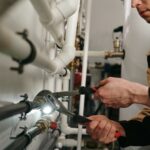 PEX vs Copper in New Homes: What’s Right for You? | Creative Repipe
PEX vs Copper in New Homes: What’s Right for You? | Creative Repipe
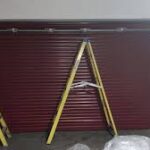 Top Benefits of Professional Roller Shutter Repair in London
Top Benefits of Professional Roller Shutter Repair in London
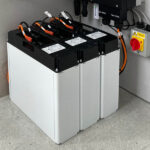 What to Expect When Buying a Solar Battery Locally – Pricing, Quality, and Local Support Insights
What to Expect When Buying a Solar Battery Locally – Pricing, Quality, and Local Support Insights
 Warning Signs You May Be Working With An Unqualified Roofing Contractor
Warning Signs You May Be Working With An Unqualified Roofing Contractor
 Organizational Potential The Power of Strategic Planning Facilitation
Organizational Potential The Power of Strategic Planning Facilitation



